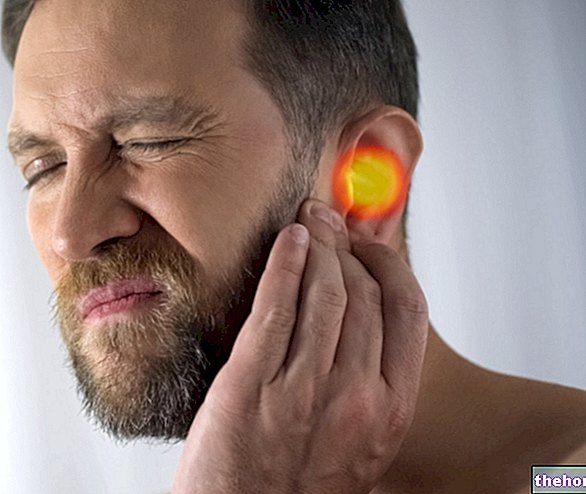This pathology causes gradual hearing loss and, if left untreated, can degenerate into complete deafness.
The precise cause of otosclerosis is not yet known; however, the sharing of genetic and environmental factors is suspected.
To review: Otosclerosis: What it is, Causes and Symptoms (physical examination), on audiometry and tympanometry. The latter, in particular, provide more than reliable data and are considered the tests of choice for making a precise diagnosis.
Differential diagnosis is also useful, ie the diagnosis based on the exclusion of pathologies with symptoms similar to those of otosclerosis; from this point of view, subjecting the patient to a CT scan (computerized axial tomography) offers numerous advantages.
Finally, the lack of reliability of otoscopy should be noted; in fact, patients undergoing this examination often do not show any anomalies.
Audiometric Tests for Otosclerosis
Audiometric tests help the physician to evaluate the patient's hearing loss. Audiometry includes numerous types of tests; the most used in the diagnosis of otosclerosis are:
- Speech audiometry;
- Rinne's test;
- Weber test;
- Carhart test.
The most important of these and the first to be performed is vocal audiometry. If it emerges from it that the patient does not perceive low tones, the hypothesis of otosclerosis becomes more than concrete.
Each of the other tests is carried out in particular ways and serves as a support for the first voice audiometric test.
In general, audiometric tests are quick and non-invasive for the patient.
Tympanometry for Otosclerosis
Tympanometry is the test of choice for evaluating the movements of the three ossicles that make up the middle ear.
Evaluation of the ossicular chain reveals how blocked the sclerotic stapes are.
It is a quick and painless test.
CT scan and Differential Diagnosis in Otosclerosis
The CT scan highlights the site of the new bone formation: the anomalous mass which blocks the stapes and which affects the cochlea takes on the appearance of a halo.
Thanks to the CT scan, the doctor can rule out other pathologies, such as Paget's disease of the bone and osteogenesis imperfecta; in fact, unlike otosclerosis, these two conditions show other characteristic signs of bone damage, signs that only the CT scan is in able to highlight.
Since CT uses ionizing radiation, it is considered a moderately invasive test.
The following table summarizes some of the diseases that could be confused with otosclerosis.
They can be:
- Mediasuppurative otitis;
- Chronic serous otitis media.
They can determine:
- Damage to the three ossicles, in particular to the anvil;
- Infectious tympanosclerosis.
Has other bone abnormalities.
Has other bone abnormalities.
The results are not entirely satisfactory and the drug can have annoying side effects.
Surgery for Otosclerosis: Intervention Techniques

Surgery is used when patients show severe hearing loss that cannot be remedied with just the hearing aid.
There are two possible operations:
- The stapedectomy. It consists in removing the sclerotic stapes and replacing it with a prosthesis. In this way, the normal conduction of the sound signal is re-established, through the movement of the three ossicles.
The replacement bracket can be metal or plastic. - The stapedotomy. It is a new surgical technique. It involves the removal of the head and the arches of the stirrup, and the conservation of the base (i.e. the part connected to the cochlea).
Precisely on the base, using a micro-drill or a laser, the surgeon makes a hole, inside which he inserts a Teflon prosthesis similar to a small piston; at this point, he hooks the piston to the anvil: in this way it guarantees the transmission of the acoustic signal coming from the ossicular chain.
Otosclerosis surgery: the two techniques compared
Stapedotomy has become the technique of choice for the treatment of otosclerosis.
Compared to stapedectomy, it is more reliable and less invasive; in fact, with the partial removal of the stirrup the risk of damaging the cochlea is lower.
Surgery for Otosclerosis: Success, limits and complications of the intervention
In 95% of cases, the intervention is successful and the patient recovers a good part of his hearing abilities.
In some individuals, the improvement is immediate; in other subjects, however, it takes a few months to see the positive effects of the intervention.
The main limitations of the operation are two.
If you are faced with a sensorineural otosclerosis, hearing recovery can be more difficult; the cochlea, in fact, is a very delicate organ.
The second obstacle concerns tinnitus: if present, they are not extinguished by surgery.
Finally, complications are worth noting. As with any surgical operation, there are possible dangers for the patient. Being a delicate organ, the ear (and some of its internal structures) can suffer irreparable damage during the operation. For example, the surgeon may inadvertently damage the eardrum, cochlea, or nerve endings that carry the signal to the brain, causing deafness. Therefore, not to prejudice in toto the auditory faculty of the patient, the two ears are never operated on together.




























